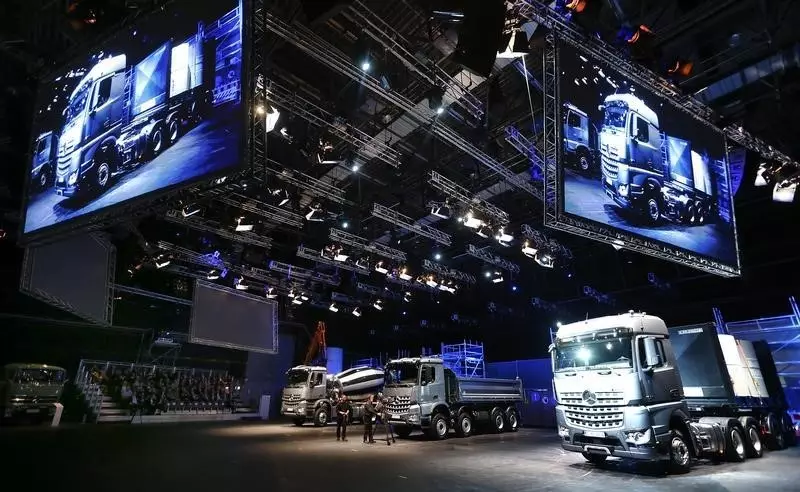Daimler Truck, listed on the Frankfurt Stock Exchange, unveiled its third-quarter results, signaling a blend of positive outcomes and concerning challenges. The company reported an adjusted EBIT of €1.15 billion, reflecting a robust margin of 9.3%, and exceeding market predictions by approximately 5.6%. With industrial revenue reaching €12.31 billion, matching forecasts, Daimler Truck’s performance for the quarter at first glance appearsstrong. However, the results highlighted a troubling narrative regarding profitability at Daimler Trucks North America (DTNA), hinting at impending difficulties that could impact the fourth quarter.
The quarter was particularly noteworthy for Mercedes-Benz, a key segment of Daimler Truck’s portfolio. With revenues of €4.4 billion, this division exceeded expectations by 4.7%. Adjusted EBIT of €283 million and a margin of 6.4% not only surpassed projections but also alleviated investor fears surrounding profitability, as margins above 6% had become a benchmark in the automotive industry. Nevertheless, a significant factor was the rise in research and development (R&D) capitalization, which surged to 32%, a stark increase from just 11% in the previous year. While this escalation supports immediate margins, it raises questions about future cost structures and the sustainability of such financial strategies.
In stark contrast to the success at Mercedes-Benz, DTNA experienced a more tumultuous quarter. While its revenue aligned with anticipated figures, the adjusted EBIT fell short, approximately 6% below consensus expectations. With a margin of 12.1%, DTNA’s performance did not meet the anticipated target of 12.7% due to an unfavorable product mix—shifting towards medium-duty and vocational vehicles that are less profitable than the traditional heavy-duty models. Analysts have pointed out that as the company enters the fourth quarter, the mix is likely to continue posing challenges, particularly with external factors such as Hurricane Helene affecting operations in the Carolinas.
Another worrisome aspect of the Q3 results is the industrial free cash flow, reported at negative €41 million, which starkly contrasts with an anticipated €118 million. The root of this shortfall can be traced to increased working capital needs stemming from supply chain disruptions and excessive inventory levels. Despite these adverse conditions, Daimler Truck has reiterated its full-year guidance for free cash flow, projecting that it will remain comparable to last year’s performance. This commitment signals a level of confidence in recovering operational stability, yet the market will be keenly watching how these challenges influence the full-year results.
Daimler Truck’s third-quarter performances highlight a tale of two divisions: one thriving and the other grappling with substantial hurdles. While Mercedes-Benz manages to navigate profitability concerns adeptly, DTNA faces a pressing need to address its challenges, especially around product mix and cash flow. The outlook remains cautiously optimistic, but the implications of these results for fourth-quarter performance will be pivotal. Stakeholders will need to stay vigilant as the company seeks to balance growth with the emerging pressures in a rapidly evolving automotive landscape.

